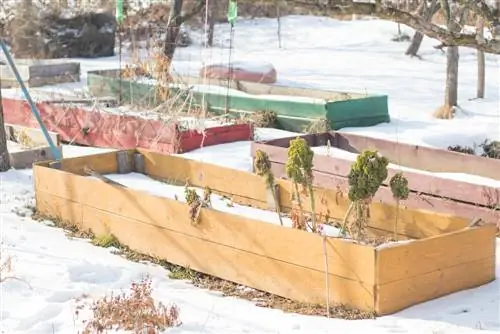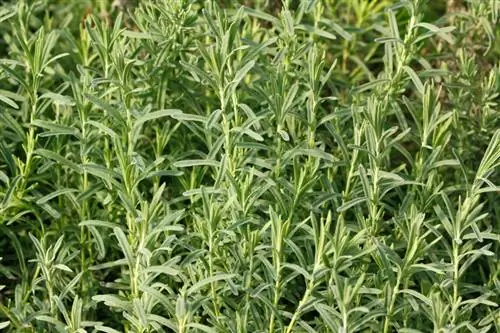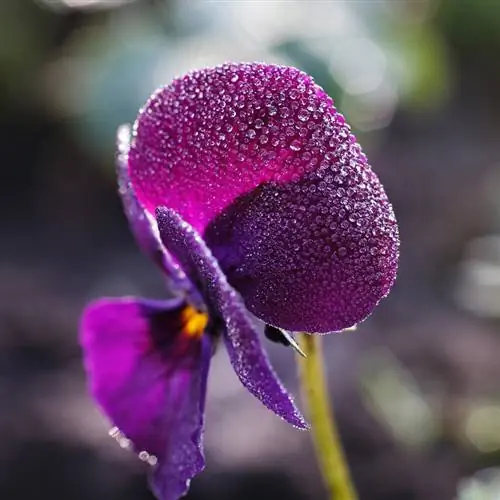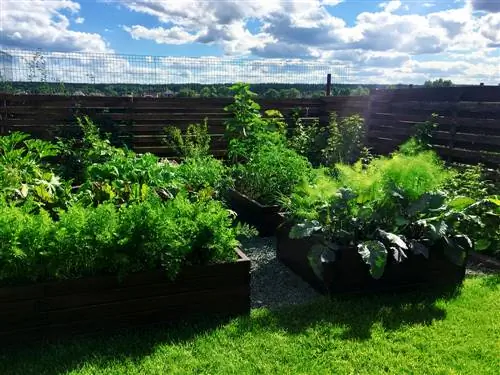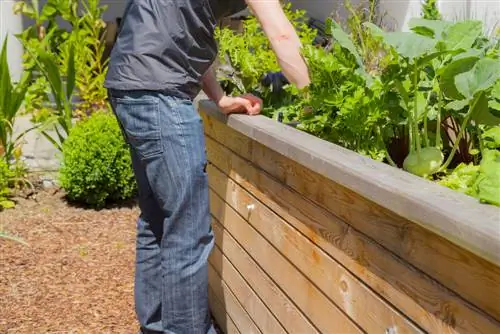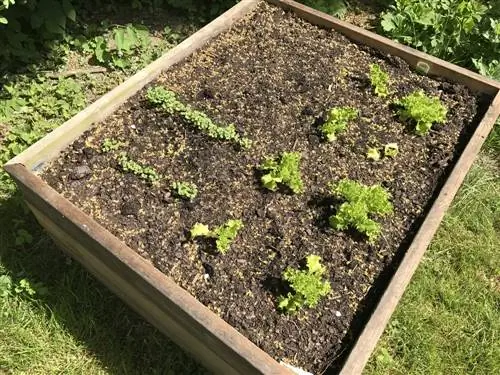- Author admin [email protected].
- Public 2023-12-16 16:46.
- Last modified 2025-01-23 11:21.
Fresh vegetables, aromatic herbs and bright flowers in all colors can be harvested non-stop from the raised bed in summer. But even during the cold season there are some frost-hardy vegetables that can be harvested fresh.
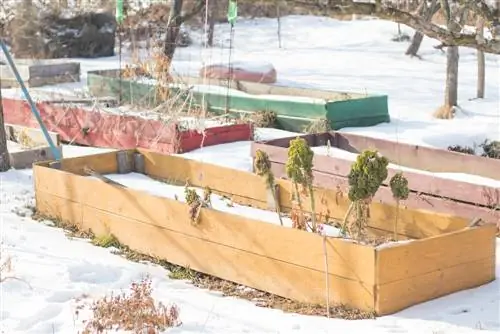
Which vegetables can be grown in raised beds in winter?
In winter, frost-hardy vegetables such as winter leeks, lamb's lettuce, parsnips, winter spinach, sprouted broccoli and kale can be grown in raised beds. The harvest time can be extended with polytunnels or greenhouse attachments.
Raised bed attachments or polytunnels extend the garden season
Plants grown under foil or glass grow faster and more evenly than conventionally grown plants thanks to the warmed and moisture-saturated air. In addition, such tools allow fresh vegetables to be harvested earlier in the spring and a few weeks longer in the fall. With the help of a polytunnel (€139.00 on Amazon) or even a greenhouse attachment, you can even harvest crunchy lamb's lettuce or spicy parsnips in winter.
You can still grow these vegetables in winter
There are a whole range of vegetables that you can leave in the bed even in winter and only harvest when needed. Cold and frost have no effect on them; for some they are even crucial for their good taste. But the same applies here: growth is extremely slow in winter, so the plants listed have to be brought forward in summer.
Winter leek
If you want to harvest leeks in winter, you should choose explicit winter varieties such as 'Blue-Green Winter', 'Fahrenheit' or 'Pluston'. Other varieties are bred for cultivation in summer or autumn and are therefore only partially hardy. Winter leeks are sown in July, either directly in the bed (rather unfavorable, as the space can also be used for other purposes) or in pots.
Lamb lettuce
Lamb lettuce, also known as winter lettuce or rapeseed, is the ideal vegetable for secondary cultivation. Sow the seeds between mid-July and mid-September to provide fresh greens during the cold months. Seeds planted in November ensure a spring harvest rich in vitamins.
Parsnips
Parsnips are sown and grown directly into the bed in May, but can remain there throughout the winter. The roots are insensitive to frost and are the perfect winter vegetable.
Winter spinach
Winter spinach is best sown directly into the bed between September and early/mid-October as a secondary crop.
Sprout broccoli
Winter or sprout broccoli is preferred and planted in the bed as young plants in autumn. However, it takes a good six months until the harvest: you can finally harvest the delicate florets between March and May.
Kale
Kale, depending on the variety, should be grown between mid-April and mid-May and placed in the raised bed by mid-July at the latest. The collards are then harvested after the first heavy frosts between November and January.
Tip
If you want to overwinter your raised bed harvested and let it rest until spring, you should cover it with a mulch layer of half-ripe compost, leaves, brushwood or dark foil. This will prevent the valuable nutrients from being washed out.

